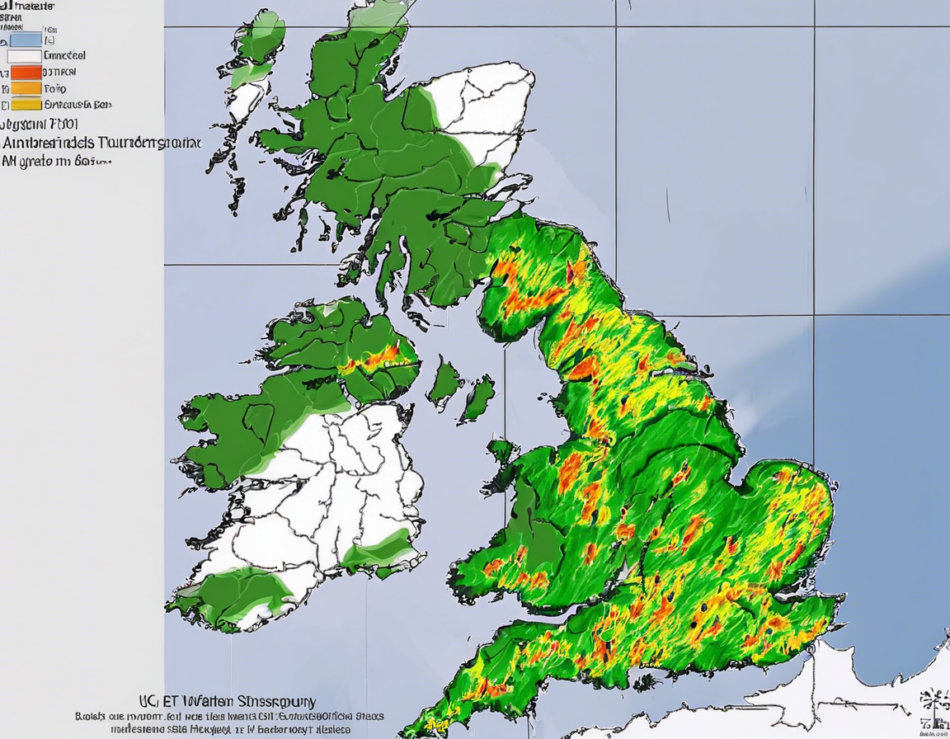Introduction:
The UK Met Office has recently issued a warning for thunderstorms across various parts of the country, highlighting the potential for heavy rain, lightning strikes, and even flash flooding. As such, it is crucial for individuals to stay informed and prepared for any potential impacts these thunderstorms may bring. In this article, we will delve into the specifics of this weather update, discuss the potential impacts of thunderstorms, and provide essential tips for staying safe during such severe weather conditions.
Understanding Thunderstorms:
– Formation: Thunderstorms typically form when warm, moist air rises rapidly in the atmosphere, leading to the formation of cumulonimbus clouds. These clouds can reach great heights and are often associated with unstable atmospheric conditions.
– Components: Thunderstorms are characterized by the presence of thunder and lightning, as well as heavy rainfall, strong winds, and in some cases, hail. The intensity of a thunderstorm can vary, ranging from mild to severe, with the potential for significant damage.
– Duration: Thunderstorms can last anywhere from a few minutes to several hours, depending on various factors such as atmospheric conditions and the movement of the storm system.
Potential Impacts of Thunderstorms:
– Flooding: One of the primary concerns associated with thunderstorms is the potential for flash flooding. Heavy rainfall can overwhelm drainage systems and lead to localized flooding in low-lying areas.
– Lightning Strikes: Lightning is a major hazard during thunderstorms, with the potential to cause fires, power outages, and injuries. It is essential to seek shelter indoors during a thunderstorm to reduce the risk of being struck by lightning.
– Strong Winds: Thunderstorms can produce strong gusts of wind, capable of causing damage to buildings, trees, and power lines. Securing loose objects outdoors is crucial to prevent them from becoming projectiles during a storm.
– Hail: Some thunderstorms may produce hail, which can range in size from small pellets to larger stones. Hail can cause damage to vehicles, crops, and property, posing a threat to safety.
Staying Safe During Thunderstorms:
– Stay Informed: Keep abreast of weather updates and warnings issued by the Met Office or local authorities. Having access to reliable information can help you make informed decisions during severe weather events.
– Seek Shelter: When a thunderstorm approaches, seek shelter indoors in a sturdy building. Avoid taking shelter in sheds, tents, or under trees, as they do not provide adequate protection from lightning strikes.
– Avoid Water: Swimming, boating, or standing near bodies of water during a thunderstorm increases the risk of being struck by lightning. Move indoors and stay away from windows, doors, and electrical appliances.
– Stay Tuned: Listen to weather reports on the radio or television for updates on the storm’s progress. Be prepared to take action if conditions worsen or if evacuation orders are issued for your area.
FAQs:
Q1: What should I do if I am caught outside during a thunderstorm?
A1: If you are unable to reach a safe indoor location, avoid open fields, isolated trees, and bodies of water. Crouch down in a low-lying area, but do not lie flat on the ground.
Q2: Can thunderstorms occur at any time of the year in the UK?
A2: Thunderstorms are more common in the summer months when atmospheric conditions are conducive to their formation. However, they can occur at any time of year.
Q3: How can I protect my home from lightning strikes during a thunderstorm?
A3: Install surge protectors and lightning rods on your property to divert lightning strikes away from the structure. Avoid using electrical appliances during a thunderstorm.
Q4: What should I do if my area is experiencing flash flooding during a thunderstorm?
A4: Move to higher ground immediately and avoid walking or driving through flooded areas. Follow evacuation orders issued by local authorities.
Q5: Is it safe to use electronics during a thunderstorm?
A5: It is advisable to unplug electronic devices and avoid using corded telephones during a thunderstorm to reduce the risk of electrical surges caused by lightning strikes.
In conclusion, with the UK Met Office warning of thunderstorms in various regions, it is essential to be vigilant and prepared for severe weather conditions. By understanding the impacts of thunderstorms, staying informed, and following safety guidelines, individuals can mitigate risks and protect themselves during these potentially dangerous weather events.
